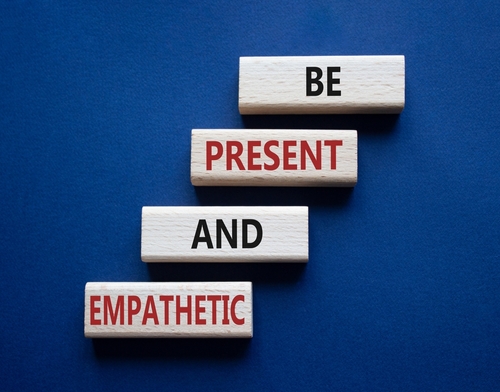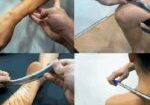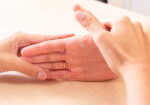Simple but Effective Ways Hand Therapists Address Psychosocial Impacts of Upper Extremity Injuries
Filed under Treatments
Although psychosocial factors are often not formally assessed during an evaluation in those with upper extremity injuries, the therapist often informally assesses these during and after treatment sessions. Sustaining an upper extremity injury can be a physically and emotionally challenging experience. Beyond the physical pain and limitations, these injuries can profoundly impact an individual’s psychosocial well-being. Patients deal with upper extremity conditions that impact their overall function, including long-term chronic pain, acute traumatic injuries, stiffness, range of motion, and strength limitations. Which, as a result, impacts their overall mental health and well-being. This all contributes to the patient’s success in therapy and overall recovery. Below are some simple tips to address these factors with patients.

- Symptom acknowledgment and validation: During the evaluation, patients are asked about what symptoms they are experiencing. When the therapist acknowledges and validates the patient’s condition, concern, and/or problem, this helps to create a positive impact immediately.
- Goal-Oriented Therapy Plans: Collaborating with patients to create personalized rehabilitation plans that include specific goals is essential. This goal-oriented approach fosters a sense of purpose and achievement, boosting patients’ self-esteem and confidence as they progress toward regaining their hand function.
- Social Support Integration: Upper extremity injuries can lead to feelings of isolation. Encourage the patient to involve their loved ones in the rehabilitation process. Fostering a supportive environment can accelerate the healing process and mitigate feelings of loneliness and depression.
- Education and Information: Educating patients about their injuries, the healing process, and the tools available for rehabilitation is an essential part of the therapist’s role. By arming patients with knowledge, therapists empower them to participate in their recovery and make informed decisions.
- Positive Reinforcement and Encouragement: Celebrating small victories by using positive reinforcement and encouragement to boost patients’ self-confidence and self-worth as they make incremental progress in their therapy journey.
- Activity Modification: Upper extremity injuries may require patients to adapt daily activities. By working creatively to find adaptive solutions that enable patients to continue engaging in the activities they enjoy. This fosters a sense of normalcy and prevents feelings of helplessness.

Hand therapists play a pivotal role in helping individuals regain their upper extremity function and rebuild their psychological well-being and overall quality of life through empathetic communication, goal-oriented approaches, education, and a holistic understanding of patients’ emotional needs.
More To Read
Sensitivity and Specificity in Thoracic Outlet Syndrome (TOS) Tests in Hand Therapy
By: Mikayla Murphy Sensitivity and Specificity in Thoracic Outlet Syndrome (TOS) Tests in Hand Therapy Thoracic outlet syndrome (TOS) describes the compression of nerves, arteries, and veins as they pass through the thoracic outlet. Compression can occur at the interscalene triangle, the costoclavicular triangle, and the subcoracoid space (Physiopedia, n.d.). There are three types of…
Read MoreWhat is the Effectiveness of IASTM?
Citation Kim, J., Sung, D. J., Lee, J. (2017). Therapeutic effectiveness of instrument-assisted soft tissue mobilization for soft tissue injury: Mechanisms and practical application. Journal of Exercise Rehabilitation, 13(1). doi: https://doi.org/10.12965/jer.1732824.412 The skinny IASTM is a relatively simple technique that uses the surface of an instrument to minimize the amount of pressure or force needed…
Read MorePain management techniques for Wrist Fractures
Pain management techniques for wrist fractures Distal radius fractures account for 17.5% of all fractures with a median age of 60.23(Candela et.al, 2022). Pain management is a significant part of post wrist fracturetreatment due to limitations that pain incurs. Chronic Regional Pain Syndrome (CRPS) canoccur along with a distal radius fracture but will not be…
Read MoreTherapeutic Exercise vs Therapeutic Activity
What is the difference between therapeutic exercise vs therapeutic activity? Therapeutic exercise is billed as 97110 and Therapeutic activity is billed as 97530. Both are CPT codes that are commonly used in occupational and physical therapy billing. These codes are very similar and are often confused. So, when and what do you document for each…
Read MoreSign-up to Get Updates Straight to Your Inbox!
Sign up with us and we will send you regular blog posts on everything hand therapy, notices every time we upload new videos and tutorials, along with handout, protocols, and other useful information.






